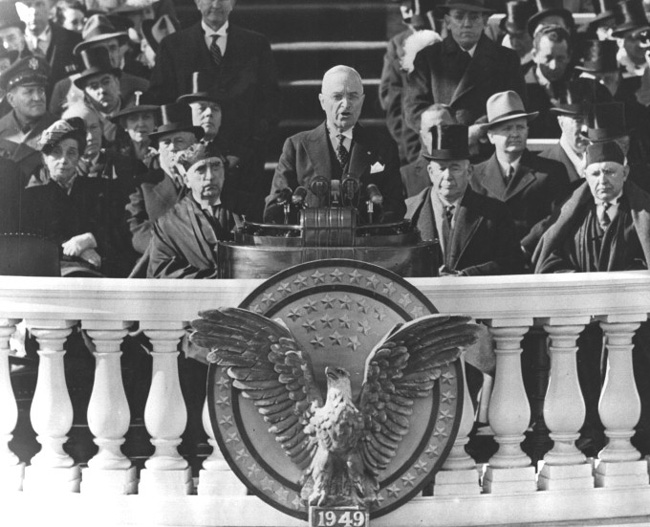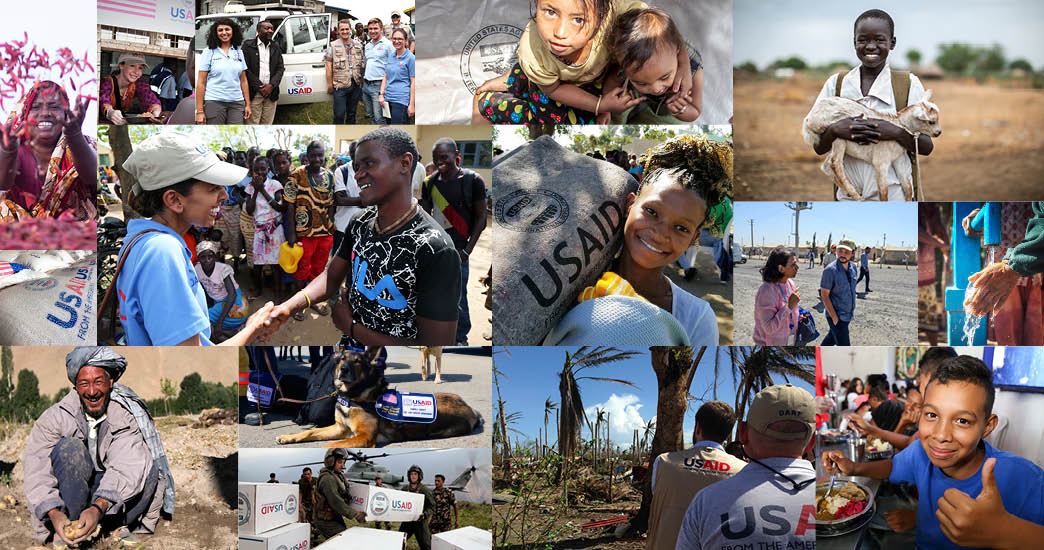The United States Agency for International Development (USAID) is responsible for the management, distribution, and execution of a little more than half of all of the long-term foreign assistance given by the American government to developing nations.
The modern concept of delivering international development and humanitarian assistance as an organized part of American foreign policy arise at the end of World War II with the Marshall Plan, named for George C. Marshall, then the Secretary of State (equivalent to the Foreign Minister in other countries). From 1947 to 1949, the Marshall Plan was the first large-scale effort to deliver development assistance to foreign countries, predominantly the European allies of the United States.
In 1949, American President Harry Truman decided to capitalize on the success of the Marshall Plan by creating the Point Four Program (also under the auspices of the State Department) to assist underdeveloped economies, by exporting American skills and capital to nations with no “certain types-of extreme “nationalism”, such as the Soviet Union’s”.

Starting in 1952, the Point Four Program was buttressed by other forms of foreign aid and long-term development assistance via the creation of government agencies such as the International Cooperation Administration, the Foreign Operations Administration, the Development Loan Fund, and the Mutual Security Agency, all of which were largely coordinated by the State Department.
In 1961, the American Congress passed the Foreign Assistance Act into law, allowing President John F. Kennedy to create the Agency for International Development (later renamed USAID) via Executive Order 10973, thus merging the existing government departments and agencies working in the field of foreign non-military aid under one umbrella. Although technically separate from the State Department, all of USAID’s activities are considered to be part of the official foreign policy of the United States government.
Today, the USAID is one of the largest official aid agencies in the world and has an annual budget of over $47 billion.
What Is USAID?
USAID is an organization funded and directed by the United States government that is considered to be an independent federal government agency, meaning it enjoys greater autonomy from oversight from the Executive Office of the President.
USAID was created following the passage of the Foreign Assistance Act into law by Congress, and the American Congress defines USAID’s goals, sets its program, and determines its budget. USAID is responsible for the majority of all non-military foreign aid disbursed by the United States government.

What Does USAID Do?
USAID manages and disburses a little more than half of all non-military foreign aid given by the United States government in the name of furthering American foreign policy while “extending a helping hand to people struggling to make a better life, recover from a disaster or striving to live in a free and democratic country.”
Who Owns USAID?
Officially, USAID is classified as an “independent agency,”, but it is entirely funded and managed under the auspices of the American government.
All of USAID’s program activities are authorized by the Congress of the United States, and the agency’s aid budget is set by Congress on a yearly basis. Because USAID’s activities are an official component of American foreign policy, the agency is under the oversight of the President, the National Security Council, and the State Department, although it enjoys a great deal of autonomy.
What Does “USAID” Stand For?
USAID is an acronym that stands for the United States Agency for International Development. In 1961, most of the United States’ long-term foreign assistance programs were merged under the management of the newly formed USAID.

What Are USAID’s Goals?
Following its creation in 1961, USAID’s primary goals were to encourage the development of market economies in countries “not dominated or controlled by the international Communist movement” and to open those markets to American goods. However, in the 1970s, USAID began to shift its focus away from capacity building to prioritize the delivery of “basic needs,” which were determined to be food assistance, improved health, population control, universal education, and human resources development.
In the 1980s, USAID pivoted once again to return to its original mission of developing and protecting overseas markets in allied countries. In addition to providing capital and technical assistance to achieve these endeavors, USAID also began working to stabilize the currencies and financial systems of allied countries. Alongside the assistance given directly to foreign countries’ governments, USAID also began working with private voluntary organizations (PVOs) to execute development projects.
In the 1990s, USAID once again shifted its primary focus, this time to promoting democracy and sustainability. Foreign governments receiving USAID funds were now given “integrated packages of assistance” that required the implementation of wide-scale reforms, often overseen and administered by USAID officials.
After the collapse of the Soviet Union in 1991, USAID expanded the number of countries where it operated, often using cutouts in the form of non-governmental organizations (NGOs) where an active presence of the US government was politically unfeasible. In addition, USAID began to deliver short-term financial assistance to friendly countries undergoing a political or economic crisis.
After the turn of the new millennium, USAID once again pivoted, this time to focus on a strategy of rebuilding countries devastated by war, particularly Iraq and Afghanistan. Much of USAID’s efforts were now focused on the restructuring of a developing country’s entire civilian infrastructure, including its government, health care, agriculture, and educational systems.
In more recent years, USAID has strengthened its network of partnerships with both NGOs and private enterprise in order to deliver comprehensive development assistance to target nations. USAID now operates in more than 100 countries and has approximately 9,000 people on staff. The agency’s current goals are to “promote American prosperity through investments that expand markets for U.S. exports” and to support “stable, resilient, and democratic” societies abroad.
See also: Top six USAID contractors in 2021

